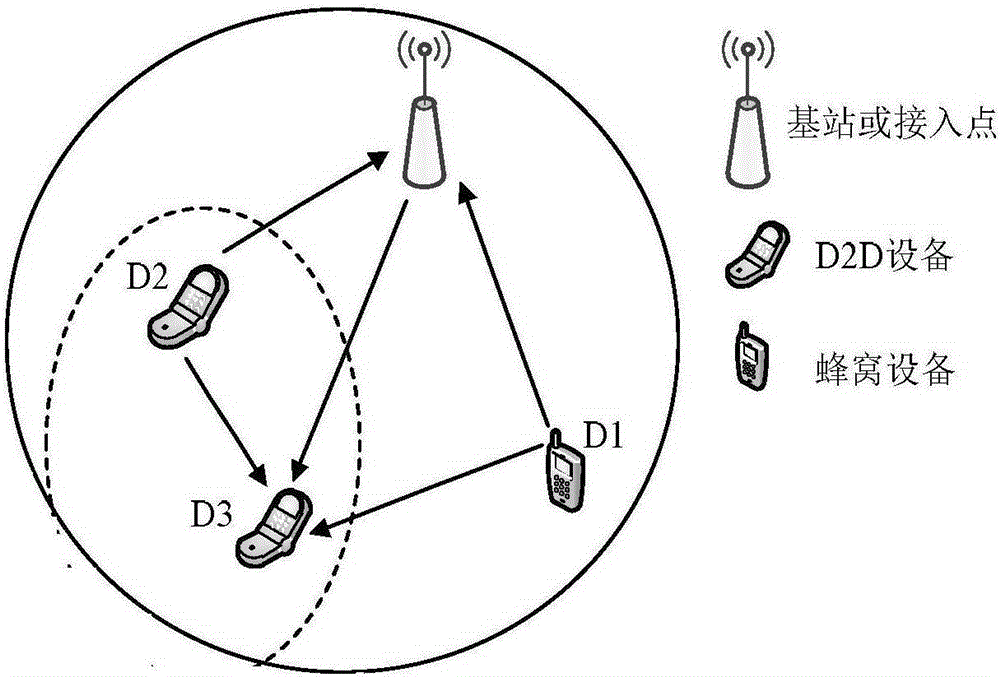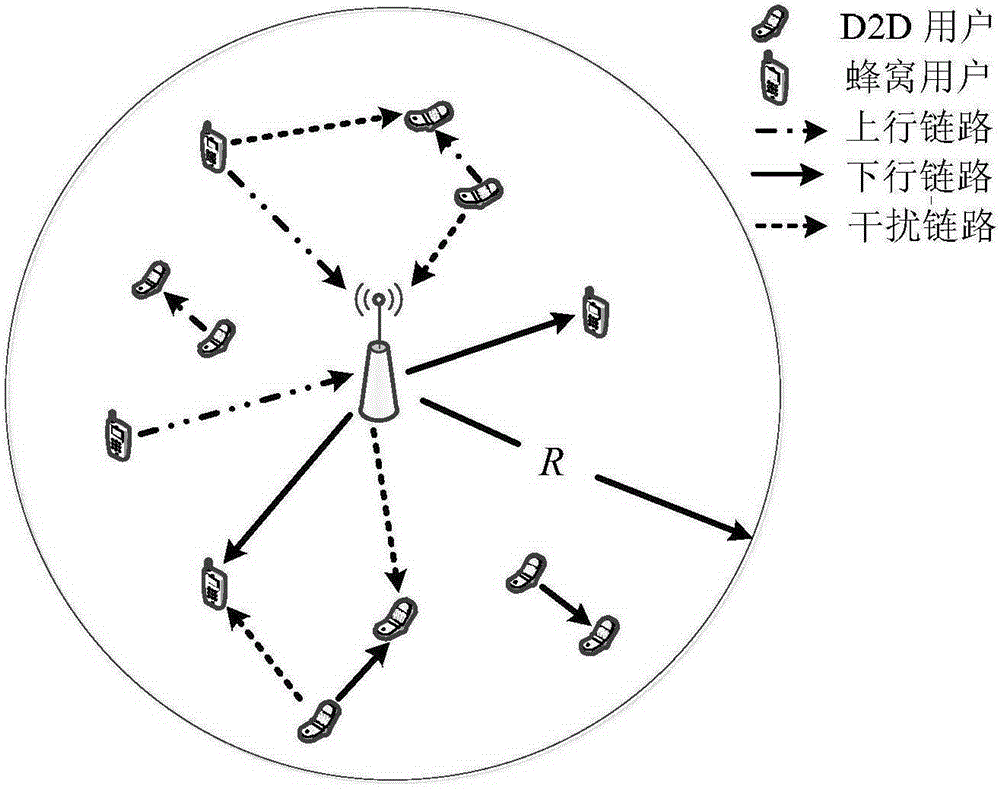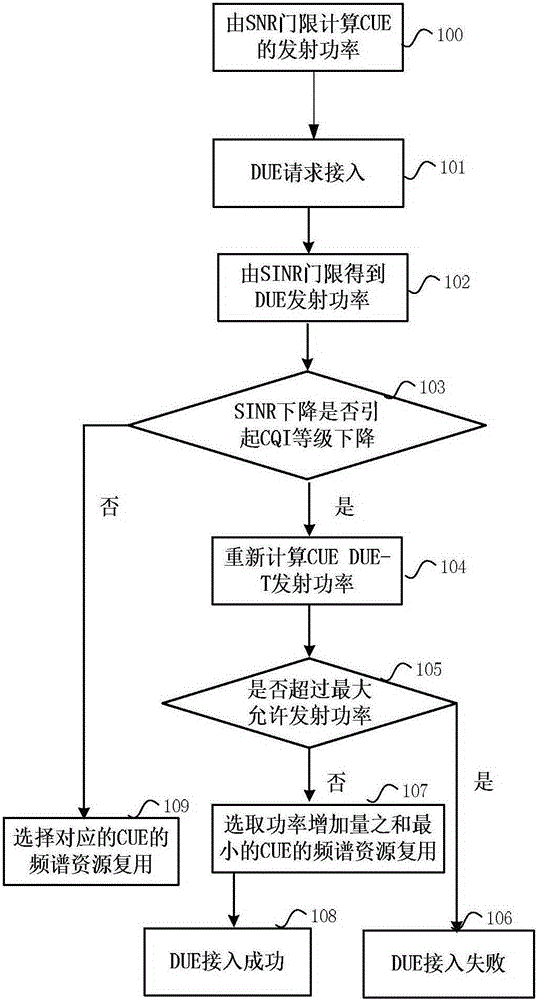D2D communication resource multiplex selection method, base station and terminal
A technology of communication resources and base stations, applied in the field of communication, can solve the problems of real-time power compensation of users, waste of transmit power, and reduction of D2D link establishment probability, and achieve the effect of improving access probability.
- Summary
- Abstract
- Description
- Claims
- Application Information
AI Technical Summary
Problems solved by technology
Method used
Image
Examples
Embodiment Construction
[0062] In the scenario of short-distance D2D communication under the cellular network, when D2D users and cellular users reuse the same resources, the system can obtain higher spectrum efficiency. In the scenario where D2D users and cellular users multiplex the same resources for communication, the interference generated by multiplexing different cellular resources is different. When D2D users multiplex cellular user uplink resources, the base station that is interfered by D2D users in the system is ; When the D2D user multiplexes the downlink resource of the cellular user, it is the cellular user that is interfered by the D2D user in the system. If the co-channel interference generated by multiplexing is not effectively dealt with, the introduction of D2D communication will not only fail to improve the system performance, but will degrade the quality of the original cellular communication. Therefore, it is very important to reasonably select resource multiplexing and reduce t...
PUM
 Login to View More
Login to View More Abstract
Description
Claims
Application Information
 Login to View More
Login to View More - R&D
- Intellectual Property
- Life Sciences
- Materials
- Tech Scout
- Unparalleled Data Quality
- Higher Quality Content
- 60% Fewer Hallucinations
Browse by: Latest US Patents, China's latest patents, Technical Efficacy Thesaurus, Application Domain, Technology Topic, Popular Technical Reports.
© 2025 PatSnap. All rights reserved.Legal|Privacy policy|Modern Slavery Act Transparency Statement|Sitemap|About US| Contact US: help@patsnap.com



